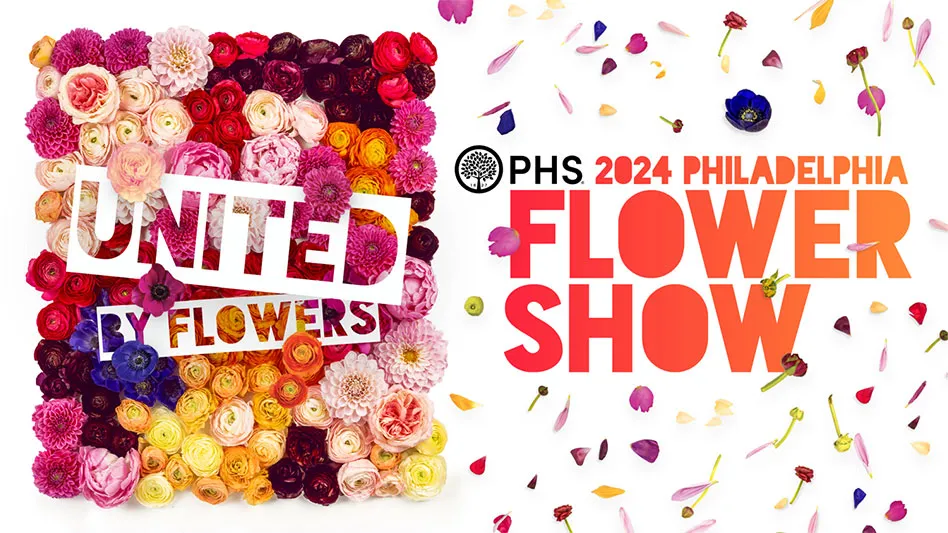

Imagine if you could hire a staff member to help you create content, improve SEO, analyze data and bounce ideas off of — for free. Then imagine they have access to a ridiculous amount of data and unlimited availability. That’s how early adopters of ChatGPT are describing the wildly popular AI bot.
ChatGPT is disrupting industries all over the world, offering opportunities to streamline tasks and increase efficiencies like never before. The conversational AI tool is certainly not without its dangers, but whether we’re ready or not, it’s here to stay. And it’s already changing the face of the retail landscape.
“Its use is rising on an exponential scale,” says Rob Sproule, co-owner of Alberta garden center Salisbury and founder of DIG Marketing, who has been using ChatGPT for a few months. “It’s changing very quickly. It’s changing social media; it’s changing the web and it’s changing how our customers have experiences in our stores.”
While AI may seem like the beginning of the robot revolution, you’ve probably been using it for years. Amazon’s Alexa and Apple’s Siri both use AI to respond to voice commands in your home. TikTok, Instagram and Facebook all use AI to target ads and update your feed. Your thermostat might even be using AI to optimize your temperature settings.
But ChatGPT represents a big advancement in AI. It’s already the fastest growing app in history and it’s entering uncharted territory. It will take time to shake out what it means for the horticulture industry, and early adopters are raving about its capabilities, while remaining wary of what it means for the future.
“I feel like businesses that are scared of this and that are not embracing it are going be in trouble,” says Dale Spoonemore, founder of the Seed to Spoon gardening app. “I think it’s just as important as it is right now to know how to Google — to know how to put things in quotes and use pluses minuses to control what you find. I think that knowing how to interface with these AIs is going to be as important, if not more important, in the future. Now is the tipping point when you have to jump in.”
Starting the conversation
Diving into AI might seem overwhelming, but users say the best approach is to jump in headfirst and start engaging with it. That’s exactly what Spoonemore did the day ChatGPT was first released in November.
“From that point it kind of reminded me of my first days on the internet as a kid where it was this new world,” he says. “And I couldn’t really sleep for the next week or two. I was just playing with ChatGPT all day, all night, trying to find the limits of what it can do and ways you can use it to help with coding — everything you can think of.”
Since then, ChatGPT has made its way into every facet of Seed to Spoon where they use it almost daily. It isn’t writing code just yet, but it’s helping the company find coding solutions faster. For example, Spoonemore wanted to create an animation to make the app’s robot icon look like it was breathing. In no time at all, ChatGPT spit out the code for a breathing effect. “There’s things like that that would have taken a little bit of time for us to get into it. It just makes us feel way faster than before,” Spoonemore says.
Improving efficiencies
The time-saving tool is already becoming essential to some, speeding up tedious tasks like compiling information, rewriting content for different platforms and analyzing data. It’s even helping content creators come up with unique ideas.
Katie Dubow, president of Garden Media Group, uses the bot to generate topics for blogs, unique hashtags and social media content. “What it does for me is just make us more efficient at our jobs,” she says. “It helps you get that first draft down and it helps you get over writer’s block, and then you make it better from there. So this is helping people make everything they do so much better than it was.”
Platt Hill Nursery, an independent garden center in Bloomingdale, Illinois, is using AI for things like writing training manuals and creating product content. “It took what was taking, probably 20 minutes, down to a minute,” says Graham Hill, president. “So instead of writing on one product, you’re writing on 20 in the same period.”
That’s time you and your team can use for tasks only humans can accomplish like making personal connections and engaging with customers.
The importance of input
Because ChatGPT can’t read your mind (yet), it needs specific instructions to create responses with the information and voice you want. That means experimenting with questions and prompts is the key to success. “The thing you have to remember is that at the end of the day, it’s not a human brain; it’s still a computer. So treat it like that. It’s only as good as what we as human put into it,” Dubow says.
One of the most reliable ways to use ChatGPT is to input information you’ve vetted or created yourself, and ask the bot to rework it into a blog post or social media content. That’s where the “real magic” is, Spoonemore says. That way, you’re maintaining what makes your company unique and reliable.
Seed to Spoon is taking its existing plant and seed descriptions, feeding the text into ChatGPT and telling it to write social media posts to promote items when they’re on sale. “That’s one of the key things I think people need to consider ... it isn’t using it to write new stuff as much as it is taking the things you’ve already written and transforming it,” Spoonemore says.
It can also help garden centers look at products in new ways by scanning through your existing inventory. “You’re always wanting people to buy your quirky or unique stuff, so you could have ChatGPT come up with some gift ideas for someone who loves pets,” Dubow says.
Dubow has also had great success reworking her own writing with ChatGPT’s help whether it’s blogs or headlines or press releases. She and her team will go through the editing process on a piece and if an introduction needs a little extra punch, they’ll put it into the bot and ask it to rewrite it to make it more compelling or more interesting.
“They’re our words, but it’s just twisting them and using them to make them more interesting,” Dubow says. “But as creepy as it sounds, it’s just like another person on my team to help us edit the content.”
Maintaining your brand voice
If you’re looking to create new content with ChatGPT, Lucas Picciolo, president of Mossify, recommends using your brand’s attributes as part of the request parameters. “It would be hard for [ChatGPT] to write in our voice because the amount of information on our voice is limited,” he says. “So AI won’t really know your company, but you can structure it in a way where it’s in a certain voice with certain attributes.”
Sproule agrees that maintaining a brand voice is key, adding that you should create a persona of your typical customer and keep it in mind when using ChatGPT to help you customize your content. “You feed that persona to the AI and then it addresses its voice right to that person. But you also give it your own garden center brand to speak in that voice,” he says.
Seed to Spoon is careful not to use ChatGPT too much in its marketing in order to keep its content fresh and unique. The company often uses it to generate ideas or create a rough outline for video scripts but makes sure to maintain a human touch.
Dubow also recommends putting a word cap on responses so that it doesn’t get too verbose. “I’ve had it say to me, ‘In conclusion …’ and it looks like a high school term paper,” she says. “So the tighter you tell it to make it, the better.”
And as much as AI can do, it still needs a human touch to keep it on track. Like Garden Media Group, Platt Hill Nursery uses an AI platform to help create first drafts, but puts its content through a human filter.
“It definitely needs to go through review cycles to keep our brand voice accurate. AI cannot do it unilaterally,” Hill says. “But instead of writing everything from scratch, you’re starting with a 50% draft. It provides an additive capability at this point.”
Dig into data
AI can process huge amounts of data to give forecasts and predictions that can help you plan. From stocking to staffing to sales, it can help take some of the guesswork out of decisions.
For example, it can make recommendations about buying inventory and analyzing customers’ buying habits. If you feed your POS data into ChatGPT, it can analyze sales data and show you sales trends. It can even help you predict when you’re going to sell out of something or show you the impact a discount has on sales.
“You can go as deep as you want,” Sproule says. “If you’re dialed in to your POS system, you can input your POS analytics into an AI platform and it can give you your breakdown of sales trends per hour, it can tell you how many people you need based on those sales trends from different parts of the day and do your scheduling for you.”
It can also analyze reviews and social media engagement data to gain valuable insights into your customers’ opinions.
“I think that we, as the industry, still need to be the leaders in correct content.” — Katie Dubow, Garden Media Group
“Our industry is about in-store experience,” Sproule says. “So we need to remember that. All of this fancy stuff is just window dressing. Our industry is about in-store experience and it’s tactile. That’s why we’re never going out of business as an industry. But we do need to learn about it for sure.”
ChatGPT can help build algorithms as well. Spoonemore says there’s opportunity to tell people when to water their plants based on rainfall and soil evaporation rates. He has tried this with Seed to Spoon and found that he was able to give ChatGPT data from Apple weather, tell it what he was hoping to build and ask how to do it. Within 30 minutes, he had a working code that they could plug in and run with it from there.
Seed to Spoon is also using AI to make recommendations within its app. Without giving away any personal information, the app uses location and user data to find recommendations for plants, placements, companion plantings and even plant ideas based on what a gardener is interested in or looking to grow.
“Tools like that are what I think AI is going to do a great job of,” Spoonemore says. “We’re looking to leverage that now so we can use the data we have both in or databases but also from the user, and then use some of these new APIs [Application Programming Interfaces] to do things that we’ve only really dreamed of before these technologies were available.”
It can even help you sift through the best titles for your YouTube videos. Mossify creates a lot of video content, so the company will ask ChatGPT to write three variations of an SEO-friendly title based on the best-performing videos. “So it’s looking through millions of videos, so it can analyze that a lot faster than we can,” Picciolo says.
Avoiding the robopocalypse
While ChatGPT has been trained on an unprecedented amount of data from the internet, you can’t rely on it too heavily for accurate information.
“I think it’s important to remember that it may sometimes give inaccurate information so don’t ever just post it or roll with it without vetting the information,” Spoonemore says.
Jacob Stidham, director of horticulture and facilities at Yew Dell Botanical Gardens in Crestwood, Kentucky, recently discovered that Shopify is using AI to write product descriptions in different tones. All the user has to do is provide at least two descriptives for the product. He tried out different options like ‘expert,’ ‘daring’ and ‘sophisticated’ for a hellebore Yew Dell has on sale.
What he found was that Shopify’s AI is no match for someone with industry knowledge. “So it doesn’t really solve anything in terms of getting good, solid information to our customers who are in desperate need of it,” he says.
While Stidham says the future is coming and AI will definitely be a part of it, he stresses the importance of the industry maintaining control over content. He sees big opportunities to cut down on the time spent “knocking out mind-numbing material to satisfy a deadline,” but says it won’t replace the innovative content creators in the industry.
That’s why expert knowledge from trusted sources like garden centers will be more important than ever. While AI does know a lot, it’s no replacement for humans. At least not yet.
Since ChatGPT works best when it has a large database of existing information to pull from. So while there’s plenty of information out there on gardening in general, it’s tougher to find the tried-and-true advice you can provide to your customers.
“I think that we, as the industry, still need to be the leaders in correct content,” Dubow says.
Watch out for replicants
ChatGPT is constantly learning from the text users provide, which is both a blessing and a curse. While it does help the app cater its responses, the AI capability also sometimes has ‘hallucinations’ that cause it to make things up in an effort to fulfill a prompt.
There are also dangers in the SEO field. ChatGPT can improve your website’s ranking, but the fact that it doesn’t create unique content holds its own challenges. Google is already crawling sites to find plagiarism and repetition, which can hurt your ranking and even remove your website from its results pages.
“It becomes machines competing against machines,” Hill says. “The sophistication of AI is incredible, but Google has already come out and said they view ChatGPT as a threat to their search engine monopoly. So, I would say diversify risk across human writing and AI writing.”
Future forecasting
AI is becoming more sophisticated so as it progresses, you’re going to see more nuance and personality than you experience today. And that personal touch can change the way customers interact with retail garden centers.
“As soon as ChatGPT becomes a chat bot you can talk to and have a conversation with, that changes our business dramatically,” Sproule says. “Suddenly Google search is out the window. That changes how we do marketing but that also changes the idea of expertise and advice.”
Sproule says most of the garden centers he’s talking to are already seeing a big dip in seminar attendance and classes because of the basic information they can find online. They aren’t going to their local garden center to find out when to prune a hydrangea because they can just ask their phones.
“The idea of expertise in our industry is going to get diluted very quickly, especially for younger people who are more synced in with the technology,” he says, adding that this means experiences are more powerful than ever. “Your selection, your experience, your customer service are just as powerful. If anything, customer experience will be more powerful.”
Gardeners may not need to come to you as much for information like when to plant a tomato, but they will be coming to you for real, offline experiences like planting tomatoes. “That’s the opportunity,” Sproule says. “In my opinion, it’s going to make customers more starved to come to us in person because the more online our world gets, the more they’re going to crave offline. And gardening is the quintessential offline experience that builds dignity and pride.”

Explore the May 2023 Issue
Check out more from this issue and find you next story to read.
Latest from Garden Center
- Weekend Reading 5/17/24
- GardenComm 2024 Annual Conference registration is open
- Landmark Plastic celebrates 40 years
- Proven Winners introduces more than 100 new varieties for 2025
- Weekend Reading 5/10/24
- The Family Business, Part 2: Agreeing (and disagreeing) on capital investments
- Registration opens for Darwin Perennials Day
- Weekend Reading 5/3/24





